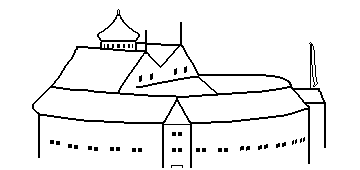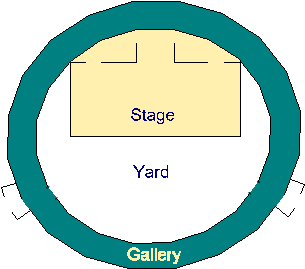
| Home |
| Gaynor |
| Mike |
| Art |
| Theatre |
| Shakespeare |
| Sam Beckett |
| Harold Pinter |
| Tom Stoppard |
| Globe Playh'se |
| Book Shop |
Advanced search

Original
|
|||||||||||||||||||||||||||||||||||||||||||||||||||||||||
|---|---|---|---|---|---|---|---|---|---|---|---|---|---|---|---|---|---|---|---|---|---|---|---|---|---|---|---|---|---|---|---|---|---|---|---|---|---|---|---|---|---|---|---|---|---|---|---|---|---|---|---|---|---|---|---|---|---|

|
|||||||||||||||||||||||||||||||||||||||||||||||||||||||||
The Building |
|||||||||||||||||||||||||||||||||||||||||||||||||||||||||
|
My drawing below is a conjectural plan of the Globe. I intend to improve it, adding more detail in the future. The work is based upon books by Andrew Gurr, John Orrell and others including C. Walter Hodges. |
|||||||||||||||||||||||||||||||||||||||||||||||||||||||||

|
|||||||||||||||||||||||||||||||||||||||||||||||||||||||||
|
The Globe was not circular, but had twenty straight sided bays. We have deduced this from the small section of the foundations excavated in 1989. The playhouse was doughnut shaped. A yard open to the sky surrounded by a thatched gallery ten feet wide. The outer wall of the gallery was around a hundred feet across, and was three storeys high. Two stair towers gave access to the upper storeys. Within the inner wall was a yard where playgoers could stand to watch the play. These members of the audience were called groundlings by Shakespeare, and paid a penny each. The stage of the Globe extended into the yard. The groundlings stood in the yard on three sides of the stage looking up at the actors. For an extra penny a playgoer could sit in one of the three tiers of galleries around the yard. The wealthiest were admitted to lords' rooms closest to the stage, perhaps even in the gallery overlooking the stage. We know they existed, but not where they were situated. The size of the stage and the entrances at the rear of the stage in the drawing are conjectural. The evidence of stage directions from plays by Shakespeare and many other plays known to have been produced at the Globe lead experts to these conclusions. The centre opening was known as the discovery-space. This would normally have been covered by a curtain, but could be opened up to show a king's throne, or Desdemona's bed, or the body of Polonius. However some experts strongly believe that there was no discovery space; the only drawing that survives of the inside of an Elizabethan playhouse, The Swan, does not show such an area. These writers say that no actor could have held the attention of the audience from such a position on stage. For me the inner stage is an obvious solution to many staging questions, but does not explain others. For instance Cleopatra and her ladies haul up the body of Antony onto a platform. Where was that platform? It must have been a temporary structure. So were there a series of temporary structures built on the Globe stage for different productions? There is considerable evidence that platforms supporting thrones were lowered onto the stage from the area under the stage roof known as the heavens. |
|||||||||||||||||||||||||||||||||||||||||||||||||||||||||
|
|||||||||||||||||||||||||||||||||||||||||||||||||||||||||
|
|||||||||||||||||||||||||||||||||||||||||||||||||||||||||


